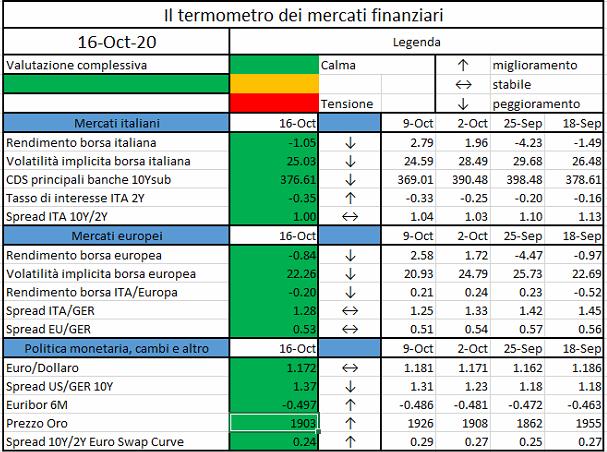
Disclaimer: Le informazioni, e dichiarazioni e le opinioni espresse nell’articolo sono da attribuirsi all’autore solamente e non sono in alcun modo riconducibili al ruolo aziendale svolto all’interno del Gruppo UniCredit né ad UniCredit stessa.
Una buona gestione dell’asset-liability management (ALM) prevede la modellizzazione di almeno due principali poste commerciali del bilancio bancario, in funzione del comportamento dei clienti: nell’attivo il prepagamento dei mutui / finanziamenti e nel passivo i depositi a vista. La necessità di tale Behavioural modelling è essenziale per comprendere il rischio di liquidità, il rischio tasso di interesse e per ottimizzare il match tra le poste attive e passive del bilancio, così da stabilizzare, e anche migliorare, la redditività (il Net Interest Income). Quest’ultima si genera essenzialmente dal mismatch temporale tra attivi/passivi ed è garantita fintanto che la curva dei tassi di interesse remunera un investimento a lungo termine più di un investimento a breve termine. Per esempio, usando le poste di bilancio, quando il tasso di interesse di riferimento di un mutuo a 20 anni (IRS) – l’attivo della banca – risulti superiore al tasso di interesse di riferimento (Euribor 3m) dei depositi – il passivo del bilancio bancario. Questa condizione si è sempre verificata sebbene, dal 2014, il tasso Euribor 3m sia diventato negativo e le banche, non potendo offrire tassi negativi alla clientela, hanno posto a zero il tasso sui depositi. Per l’ALM questo evento ha causato le seguenti ripercussioni: dal punto di vista del rischio tasso di interesse è stata venduta un’opzione floor al cliente ed una conseguente diminuzione della probabilità di repricing (c.d. pass-through), mentre il rischio liquidità è in proporzione aumentato, dato che i depositi sono aumentati a causa dell’assenza di investimenti alternativi, quali poteva essere un depositi a 3 mesi, che siano superiori allo zero[1]. In breve, in caso il tasso Euribor 3m ritornasse positivo vedremmo più velocemente defluire i depositi verso investimenti alternativi che remunerano più di zero (il tasso offerto oggi dalla banca). Ed è per questo motivo che occorre conoscere il tasso di repricing (c.d. pass-through) ed avere modelli capaci di suddividere la natura del deposito in tre componenti: transazionale, risparmio e speculativa.
L’insieme di questi eventi, lo scenario di interessi negativi e il cambiamento di comportamento nella clientela attenta alla componente di risparmio e speculativa, ribadisce la necessità di generare valore dalla gestione del mismatch di asset e liability e comporta la necessità di avere una buona gestione del ALM ed un’efficiente modellizzazione dei comportamenti dei clienti. Vediamo con esempi concreti quale è stato l’impatto del Covid-19, sebbene la crisi economica non sia ancora completata (ahimè) ed il comportamento dei clienti non si sia ancora stabilizzato, sui Behavioural models.
Dobbiamo innanzitutto affermare che i comportamenti dei clienti dall’inizio della crisi Covid-19 sono cambiati: sia l’atteggiamento dei clienti nei confronti del prepagamento dei mutui/prestiti sia la dinamica dei depositi. Questi comportamenti sono esogeni al modello, mentre aggiunge un ulteriore effetto sulla redditività della banca l’ulteriore appiattimento, oltre che abbassamento, della curva dei tassi di interessi, a seguito delle iniziative messe in campo dalla Banca Centrale Europea.
Il mix di questi eventi ha avuto un impatto sulla gestione del ALM e, inevitabilmente, ha comportato la necessità di disporre di modelli comportamentali che siano più raffinati possibile, dal punto di vista quantitativo, nell’elaborazione dei dati, ma anche più abili nel cogliere le novità presentate dal mercato. Più semplicemente, i Behavioural models hanno bisogno, più di altri modelli presenti in Banca – tipo quelli usati per stimare il capitale -, di essere più reattivi alle novità del contesto economico e, se necessario, meno basati sull’evidenza storica. Un esempio fra tutti, durante il lockdown i clienti avevano difficoltà a raggiungere la filiale per poter estinguere il mutuo (oggi sempre meno grazie alle novità messe in atto dalle banche nella relazione con il cliente on-line) e, nel frattempo, osservando maggiori incertezze nel futuro e, non potendo spendere il proprio stipendio, hanno aumentato in media i depositi sul conto corrente. Per i modelli comportamentali questo è stato uno shock. Imprevisto e imprevedibile. E che pone la domanda più difficile per chi fa Behavioural modelling: è corretto includere tale periodo nei processi di calibrazione?
Nel libro “A Guide to Behavioural Modelling” (Risk.Net, 2019) abbiamo definito alcuni Princìpi che possono supportare chi fa Behavioural modelling e nel contempo chi fruisce le conseguenze dell’output di tali modelli comportamentali (la tesoreria per le coperture dei rischi, la pianificazione per la comprensione della redditività) al fine di affrontare questi eventi inattesi nel modo più appropriato in funzione degli obiettivi prima descritti: ottimizzazione del bilancio e minimizzazione dei rischi di liquidità e tasso. Per affrontare questi eventi i Princìpi più rilevanti sono:
- Il modello dovrebbe tenere conto delle attuali condizioni di mercato, ambiente competitivo, fattori macroeconomici e dei loro possibili sviluppi
- Il modello deve tenere conto del trade-off tra complessità e qualità dei dati utilizzati
- Il modello deve essere stimato in uno scenario di normalità, detto anche On-Going basis, avendo coerenza tra il periodo di calibrazione effettuato e quello di applicazione.
Sulla base di questi tre Princìpi è possibili supportare l’esclusione degli ultimi dati, che pure abbiamo osservato, nella calibrazione del modello ma solo quando lo andremo ad applicare ad un periodo di normalità. Altresì, dovremmo ricomprendere quest’ultimi dati in caso di un nuovo lock-down. In caso si disponga di modelli più avanzati, o sofisticati dal punto di vista della capacità di elaborare i dati, si potrebbe pensare di pesare i dati osservati in funzione della loro probabilità di futuro realizzo.
Un secondo esempio è dettato dal comportamento dei depositi dei clienti durante il periodo del lock-down. Quest’ultimi sono cresciuti a seguito di due fattori, uno esogeno ed uno endogeno ai clienti: le restrizioni imposte dai decreti nazionali hanno impedito di spendere la componente transazionale (l’ammontare dei depositi dedicato alla spesa quotidiana, l’affitto o il mutuo, l’acquisto dei vestiti o anche le uscite serali) mentre l’incertezza sul futuro ha diminuito la componente dedicata al risparmio e alla componente speculativa (vendendo il portafoglio dedicato agli investimenti azionari o obbligazioni durante il crash di mercato osservato a marzo). Il mix degli eventi ha comportato un aumento dei depositi e, inevitabilmente, un effetto diretto sull’output dei modelli che considerano i dati passati e sulla loro capacità predittiva nel momento in cui tra le variabili predittive del modello non sono presenti la propensione al rischio (o al risparmio) del cliente e/o l’investimento alternativo.
Ancora una volta occorre appellarsi ad un Principio che guida le scelte di chi fa Behavioural modelling. Il Principio 4 pone una relazione diretta tra l’output del modello, la ricerca della componente stabile dei depositi che può essere considerata come funding strutturale e la componente core che può essere investita in un asset a tasso fisso, e la qualità del dato di input con la sua modellizzazione:
- La componente stabile e core deve essere proporzionale alla qualità del modello e la sua complessità
Ad esempio, se un modello dispone di dati granulari sull’esposizione dei clienti al portafoglio di investimento, sia under-asset-custody o asset under-management, sarà possibile stimare, tramite un modello complesso dal punto di vista matematico/econometrico, come storicamente si è comportato il cliente in un periodo di forte oscillazione dei mercati. E quindi stimare la sua avversione al rischio ed usare tale periodo per stabilire se la liquidità osservata nell’ultimo periodo sia davvero stabile o transitoria. D’altra parte, in assenza dei dati storici che possano dimostrare come i clienti reagiscono quando non possono spendere la componente transazionale (il lock-down per molti paesi è stato un unicum storico) dobbiamo inevitabilmente integrare il modello comportamentale con un’opinione che, un po’ presuntuosamente, chiamiamo “opinione di esperti”. Ad avallare tale opinione ci sarà il management delegato alla gestione del ALM che, in modo coerente con il business model e risk-appetite della banca, considererà questo approccio come parte integrante del Behavioural model.
In conclusione, la redditività ed il rischio di liquidità e tasso di interesse sono profondamente influenzati dal comportamento dei clienti, dal contesto economico e dai modelli interni utilizzati per gestire prospetticamente i rischi e la redditività futura. Una volta ottenuto l’output dei Behavioural models, sia da un modello semplice o uno complesso, occorre sempre valutare se questo sia coerente con le osservazioni passate ma anche con il contesto economico attuale e prospettivo.
[1] Quando si fa il Behavioural Modelling dei depositi occorre sempre suddividere la natura del deposito in tre componenti: transazionale, risparmio e speculativa






